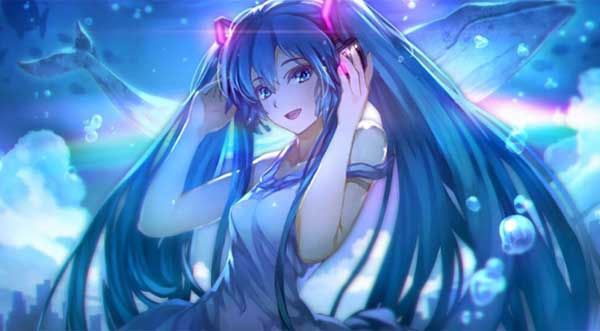From Concept to Screen: The Anime Production Process
By Space Coast Daily // December 28, 2023

Anime, a distinct style of animation originating in Japan, has captured the hearts of audiences worldwide. Behind the mesmerizing visuals and engaging narratives lies a meticulous and fascinating production process.
From the initial concept to the final screen presentation, anime creation involves various stages that contribute to the uniqueness and charm of this art form. In this article, we will delve into the intricacies of the anime production process, exploring each step from conception to the screen.
Essential Steps for Anime Production
-
Ideation and Conceptualization
At the heart of every compelling anime lies a seed of creativity that blossoms into a unique and engaging narrative. The ideation and conceptualization phase marks the inception of this journey, where creators embark on a quest to craft an imaginative world and characters that resonate with audiences.
During this initial stage, brainstorming sessions become the breeding ground for ideas. Creators, including writers, directors, and artists, converge to explore themes, plotlines, and characters that will define the essence of the anime. The goal is not just to create a story but to birth an entire universe, rich in culture, history, and emotions.
Storyboarding becomes a pivotal tool in translating these conceptual ideas into a visual narrative. Artists sketch out key scenes, framing, and potential camera angles, providing a glimpse of how the story will unfold on screen. This process acts as a critical bridge between abstract concepts and tangible visualizations, ensuring a cohesive flow for the animation.
Character design also takes center stage during ideation, as artists work tirelessly to breathe life into the protagonists and antagonists that will populate the anime. The aesthetics, personalities, and nuances of each character are meticulously crafted, setting the tone for the visual identity of the production.
In essence, ideation and conceptualization are the embryonic stages of anime creation, where the seeds of imagination are sown, cultivated, and eventually brought to life through the collaborative efforts of a passionate creative team. Further, you can learn more about anime on 漫画ロウ.
-
Scriptwriting
Once the concept is solidified, the next step is scriptwriting. Talented writers craft the narrative, delineating the plot, character arcs, and dialogue.
The script serves as the blueprint for the entire production, guiding the animators, voice actors, and directors in bringing the story to life. A well-crafted script lays the groundwork for a captivating anime that resonates with viewers on emotional and intellectual levels.
-
Storyboarding
Storyboarding is a crucial phase that bridges the gap between the script and the actual animation. Artists create a sequence of illustrated panels that represent key scenes, framing, and camera angles.
This visual roadmap allows the team to visualize the flow of the story and make necessary adjustments before entering the animation services phase. Storyboards serve as a guide for animators, ensuring a cohesive and visually appealing final product.
-
Character Design and Concept Art
Characters are the heart of any anime, and their design is a meticulous process. Character designers work closely with the creative team to bring the scripted personalities to life visually.
From costumes to facial expressions, every detail is carefully considered. Concept art provides a visual representation of the characters and the world they inhabit, setting the aesthetic tone for the animation.
-
Voice Acting
In the realm of anime production, the art of voice acting transcends mere dialogue delivery; it is the soulful infusion of emotion, personality, and life into animated characters. Often referred to as “seiyuu” in Japan, voice actors play a pivotal role in shaping the audience’s connection to the anime world.
The casting process for voice actors is a meticulous endeavor, with directors and casting agents carefully selecting individuals whose vocal tones and expressions align seamlessly with the characters they portray. These talented actors embark on a journey to understand the intricacies of their assigned roles, diving deep into the psyche of the characters to authentically convey their emotions.
The recording studio becomes a stage where the magic unfolds. Voice actors breathe life into the script, infusing each line with the nuances required to evoke laughter, tears, or suspense. Their ability to convey a wide range of emotions through their vocal prowess adds depth to the characters, making them relatable and memorable to the audience.
The synergy between animation and voice acting is a delicate dance, with the actors synchronizing their performances with the animated sequences. This harmonious collaboration elevates the viewing experience, creating a profound connection between the audience and the characters they see on screen.
In essence, voice acting is not just a profession; it is an art form that transforms words on a script into a symphony of emotions, contributing significantly to the immersive and emotional impact of anime. As fans recognize and appreciate the distinctive voices behind their beloved characters, voice acting stands as a testament to the profound artistry embedded in the heart of anime production.
-
Animation Production
With the groundwork laid, the animation production phase begins. Animators, armed with the storyboards and character designs, start bringing the anime to life.
Traditional hand-drawn animation or modern digital techniques may be employed, depending on the production’s style and budget. This phase is labor-intensive, requiring precision and attention to detail to ensure fluid movement and seamless transitions between frames. Anime like キングダム raw showcase great animation production.
-
Sound Design and Music Composition
Sound design and music play a pivotal role in enhancing the emotional impact of an anime. Composers create original scores that complement the narrative and contribute to the overall atmosphere.
Sound effects are meticulously chosen to enhance the visual elements, creating a sensory experience for the audience. The synergy between animation and sound design is a testament to the collaborative nature of anime production.
-
Editing and Post-Production
Once the animation and sound components are complete, the anime enters the editing and post-production phase. Editors carefully assemble the scenes, ensuring continuity, pacing, and overall coherence.
Special effects may be added during this stage to enhance certain visual elements. Post-production is a crucial step in refining the anime and preparing it for its eventual release.
-
Quality Control
As an anime production reaches its final stages, the critical process of quality control takes center stage, ensuring that the finished product meets the high standards set by the creative team. This phase is a meticulous examination of every frame, sound, and detail, guaranteeing a seamless and immersive experience for the audience.
Quality control involves a comprehensive review of the animation for any inconsistencies, errors, or discrepancies that might have arisen during the production process. It encompasses both technical aspects, such as animation fluidity and visual coherence, and creative elements like character consistency and adherence to the established aesthetic.
Feedback from this phase can prompt additional edits or adjustments to fine-tune the anime further. This collaborative effort between the quality control team and the creative minds behind the production aims to deliver a polished and flawless final cut.
The meticulous nature of quality control extends beyond the visual realm to encompass sound design, music composition, and overall narrative coherence. Sound engineers scrutinize every auditory element, ensuring that the music and sound effects seamlessly complement the animation, enriching the viewer’s sensory experience.
Ultimately, quality control is the last line of defense before an anime makes its debut to the world. It exemplifies the commitment to excellence within the anime industry, acknowledging that the pursuit of perfection is an ongoing process that ensures each creation is a masterpiece in its own right.
-
Distribution and Release
With the anime complete, the final step is distribution and release. The anime may be broadcast on television, released in theaters, or distributed through online streaming platforms.
The marketing strategy employed during this phase plays a significant role in the anime’s success. A well-executed release plan can generate buzz and attract a wider audience.
Conclusion
The anime production process is a multifaceted journey that transforms a creative concept into a captivating visual and auditory experience. From the initial spark of an idea to the meticulous animation and post-production, each phase requires dedication, collaboration, and artistic vision.
The global popularity of anime is a testament to the skill and creativity of the individuals involved in this intricate process. As fans eagerly anticipate each new release, they are witnessing the culmination of countless hours of hard work and passion, bringing these animated worlds to life on screens around the world.












